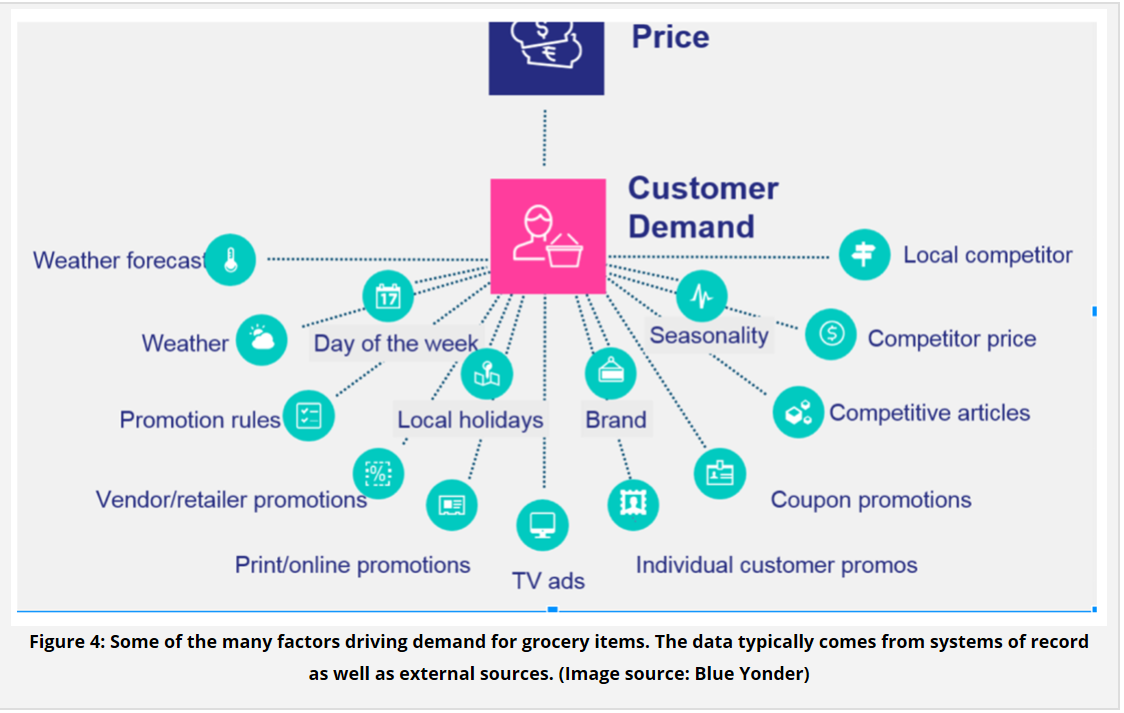 BIG DATA
BIG DATA
 BIG DATA
BIG DATA
 BIG DATA
BIG DATA
Systems of record such as enterprise resource planning software accumulate huge amounts of valuable data that can become the basis for better business decisions. Realizing that value, however, requires applying machine learning to that data.
It’s best not to rely on ERP vendors to the heavy lifting, however. Few are likely to add machine learning to their core products, in large part because it’s a new and different technology from what they know. However, third-party developers who specialize in machine learning are starting to field packaged applications designed for specific use cases, writes Wikibon Big Data and Analytics Analyst George Gilbert.
In his latest premium research on Wikibon.com, Gilbert examines one such application, created by startup vendor Blue Yonder GmbH to analyze grocers’ ERP data to optimize stocking. In one use case, it reduced shortages by 80 percent and improved gross margins by 10 percent.
Partnering with a machine learning vendor requires a significant time investment, Gilbert argues. First, machine learning expertise is rare and expensive. Blue Yonder employs a staff of Ph.D.s to build its models. Secondly, the machine learning algorithm should be able to “explain” its thinking. Machine-learning applications are notorious for being “black boxes,” and lack of visibility can lead to waste as models are repeated needlessly.
In his research. Gilbert delineates the steps for implementing a packaged machine learning application and the expenses involved in training and using it. Wikibon premium subscribers can read it here. To find out how to subscribe, look here.
Support our mission to keep content open and free by engaging with theCUBE community. Join theCUBE’s Alumni Trust Network, where technology leaders connect, share intelligence and create opportunities.
Founded by tech visionaries John Furrier and Dave Vellante, SiliconANGLE Media has built a dynamic ecosystem of industry-leading digital media brands that reach 15+ million elite tech professionals. Our new proprietary theCUBE AI Video Cloud is breaking ground in audience interaction, leveraging theCUBEai.com neural network to help technology companies make data-driven decisions and stay at the forefront of industry conversations.